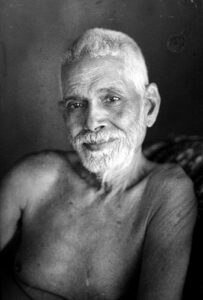What is sannyāsa (renunciation)?
The word sannyāsa is a compound word comprising संन (sann) = present + न्यास (nyāsa) = throwing away the present. So संन्यास (sannyāsa) = throwing away and means discarding everything associated with existence, from material possessions, to relationships, attachments, bonds, passion and even the present.
So, in sannyāsa, the person negates the existence of everything, including his or her own existence.
How is sannyāsa related to dharma?
In dharma, there are four stages of existence (āśrama). These are,
- Brahmacaryāśrama (stage of youth/ studentship),
- Gṛhasthāśrama (stage of a house-holder),
- Vāṇaprasthāśrama (stage of retirement),
- Sannyāsāśrama (stage of renunciation).
-
Brahmacaryāśrama (stage of youth/ studentship)
Brahmacaryāśrama is a phase of learning and formation of conditioning (dharma). Importantly, this is the most critical stage of a country and effort that society invests in teaching its youth to work with dedication (śraddhā), to sacrifice (yajña), act (karma-yoga). Also, at this stage, the individual is taught that sacrifice (yajña) with Truth (satya) will determine the country’s conditioning (dharma) and consequently, its individuality (svatantra).
-
Gṛhasthāśrama (stage of a householder)
Gṛhasthāśrama is that stage where maximum consumption occurs. Here, awareness (prajñā) is the quality that needs to be developed.Importantly, the householder (gṛhastha) implements everything that was learned in brahmacaryāśrama and begin to understand the value or shortcoming of everything that was taught. Also, they become alert to income, expenses, waste and its disposal. Additionally, they learn discrimination (viveka) and dispassion (vairāgya). As a result, householders understand and contribute to all aspects of the country’s development (kṣetrajña).
-
Vānaprasthāśrama (stage of retirement)
Vānaprasthāśrama is a stage when the person steps back from activity and reflect on the learnings of his or her gṛhasthāśrama. Importantly, in this stage, the individuals should have ensured that they have enough resources to face the remainder of life and not be dependent on anyone. The key personal development at this stage is the ability to view the Self dispassionately (vairāgya).
-
Sannyāsāśrama (stage of renunciation)
Sannyāsāśrama is the last stage, where a person is expected to focus on the nature of the Soul (ātma-vichāra), absolute freedom (mokṣa) and nature of death. Unfortunately, people often baulk at any suggestion that they should reflect on the nature of death and after-life. However, the result of ignoring this major life-event is having to face anxiety and fear of death when one is least prepared.
Stage of renunciation (sannyāsāśrama)
This is one of the most critical āśrama of the rāṣṭra, one that is unique to Bhārat. Unfortunately, the number of people willing to enter this āśrama has dwindled to almost nothing. The root cause for this can be traced to the education system (lack of knowledge of brahma-vidya and moksha) and excessive expectations of artha and kāma in grahastāśrama.
How this can be changed is a difficult question, but one that will need to be answered by individuals because sannyāsis are the embodiment of dharma and Truth. They become role-models when they are physically seen, acting as a counter-balance to materiality. They bring back balance to the civilisation (rāṣṭra).
Section 4 of the Jabala-upaniṣad explains sannyasāśrama well.
Introduction: Renunciation means letting go the sense of identity (asmitā). When there is no identification of the person with material existence, there is no karma and memory is extinguished. In this state, there is no past or future, there is only the present, which results in the person having no desire to achieve (saṅkalpa). Also, such a person treats everything, be it mud, gold or another being equally. So, there is no duality (dvandva). In this state, the person’s consciousness (citta) stops responding to stimulus, it becomes unmoving (vṛtti-nirodha) and the person experiences the unchanging, infinite tranquillity (nirvikalpa-samādhi) and merges with the Brahman.
There is no prerequisite for a person wanting to be a sannyasi. Such a person could be a brahmachāri, grahastā or a hermit. He can be from any of the vārnas (brāhmana, kṣatriya, vaishyā or śūdra). He may follow a specific school of thought or he may be independent.
Types of sannyāsis.
There are two types of renunciates (sannyāsis), vividiṣa (renunciation of the seeker) and vividvat (renunciation of the knower). Importantly, in vividiṣa, the sannyāsi renounces seeking of knowledge (this path is regression through vijñāna), while in vividvat the sannyāsi renounce knowledge through introspection (this path is through jñāna). Generally, vividiṣa–sannyāsis tend to be householders who wish to transcend materiality but are still mired in attachment. Kutichāka and bahudāka–sannyāsis generally conform to the vividiṣa classification of sannyāsis.
There are four levels of vividiṣa-sannyāsis,

- Kutichāka-sannyāsi (kutir = hut + chāka = reject) – Such a person lives in a secluded portion of his or her family home but is unattached to it. So, the business of food and other administrative aspects are covered and the person can focus purely of emancipation by restrain of speech, food and control of the senses.
- Bahudāka-sannyāsi (bahu = multiple + daka = donors) – this is similar to the above, except that the sannyāsi accepts alms from others.
- Haṃsa-sannyāsi – basically haṃsa stage is a lower stage of pramahaṃsa stage of sannyāsa. Here, the sannyāsi develops a detachment for not just material things but also supra-material knowledge such as knowledge of heavens etc.
- Parmahaṃsa-sannyāsi – haṃsa means swan and that state when there is complete merger with the Truth. Also, this sannyāsi does not identify with his own body of with any form of materiality. In fact, such a person has transcended māyā and karma, thus cycle of birth and death (samsāra) and is called jīvanmukta. A classic example of such a sannyāsi is Ramana Maharishi and Sadāśiva Brahmedrar.
Importantly, the foundational quality of a sannyāsi is detachment (vairāgyam). Furthermore, in each of the above types of sannyāsis, this quality will vary. Also, those of kutichāka and bahudāka level are considered lower level sannyāsis as they have not transcended all their insecurities.
The process of becoming a sannyāsi.
Before becoming a sannyāsi, a person should get permissions from the country’s rulers for two reasons. First, to determine that the person is competent and has the requisite cognitive capabilities to become a sannyāsi. Secondly, the person ceases to be a productive member of society and depends on society for sustenance. So, a filtration process was required to remove the immature from entering this stage. Today, this is done by the guru of the ashram into which the person seeks dīkṣā (initiation).
The process of renunciation.
Once the person has passed this stage, the person must next perform shrāddha (offering to the manes) to the following eight entities – deva (various deities), ārṣa (Vedas), divyā (celestal beings), prtrya (ancestors), mātruka (mothers), manushā (mankind), bhautikā (physical world), ātmaka (world of souls). Hence, one can see that in this process, the individual severs himself or herself from all material association. After this, the person ceases to exist as an entity and takes on a name that is related to brahma-vidya (knowledge of the truth).
One can see that becoming a sannyāsi is not easy and requires enormous drive (mumukṣutva). One can also see that there is an enormous volume of information on sannyāsāśrama available in the ancient texts, in fact, far more than any other āśrama. Conseuently, one can conclude that sannyāsa-asrama was a sought-after state by both men and women. For instance, Shukracharya’s daughter Devayani’s release from her coils is vividly explained in Srimad-Bhagavata-purāṇa.


